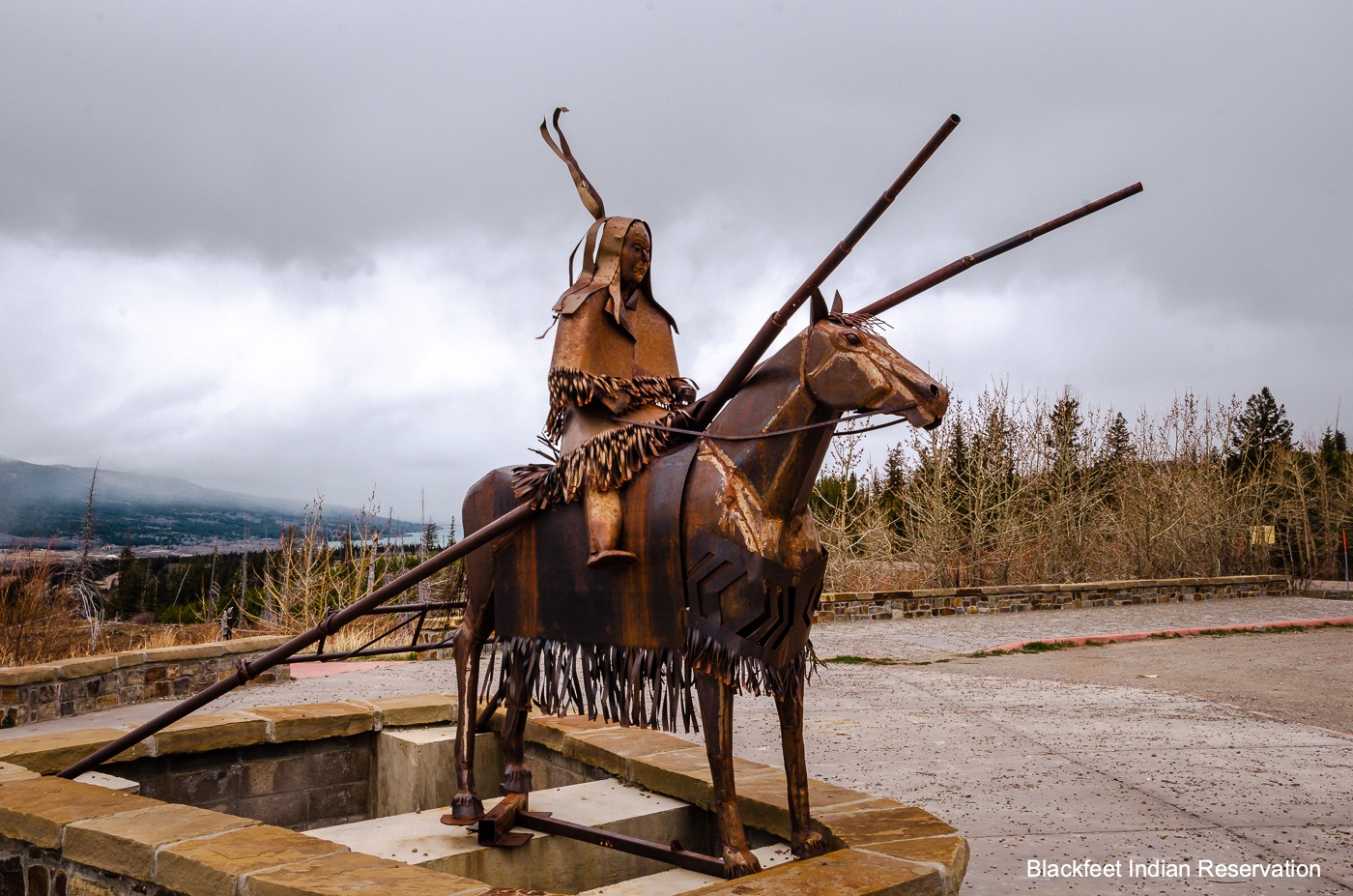As part of a 16-day, 3000-mile Rocky Mountain Road Trip with my friend Mike, we spent four jam-packed days in Montana. I had traveled through this part of Montana once before as part of a trip with my wife, daughters and friend Phil. I was impressed then and remained so on this trip by its pristine and exquisite beauty.
When To Go
For warm weather, the best time to visit Montana is between mid-May and mid-September. For cold weather, it’s between December and March during ski season.
We went in early May and most of Glacier National Park was closed from snow accumulation. If we had planned better, we would’ve gone there at least a couple weeks later. However, while there, we benefited from hardly any tourists.
Where to Go
We planned to spend most of the time in Glacier National Park. As mentioned, it was mostly closed, so we mainly drove through the mountains and intervening valleys and stopped at scenic areas and main cities. We stayed in hotels, as there were no convenient campgrounds open where we were. Here are the stops we made.

The broader area is known as the Waterton-Glacier International Peace Park, combining Waterton Park in Canada and Glacier. While marketed together, they are separately run. We could not go to Waterton because of the closed border from Covid-19..
Leaving Yellowstone National Park to Livingston
In the late afternoon we left Yellowstone through the Northern Entrance in Montana. Only a few people live in the Montana sliver of Yellowstone and none in the Idaho sliver. As a result, a criminal can get away with any crime because of the Sixth Amendment to the Constitution mandating defendants have the right to a jury of local residents. No jury means no trial. So theoretically, you can’t be prosecuted for even murder. This bizarre situation is discussed in an “On The Media” podcast titled “The Loophole”. For those of you who have watched Yellowstone, starring and produced by Kevin Costner, you might have noticed his workhands depositing dead bodies in Yellowstone, but on the Wyoming side.
After 30 minutes of highway driving, we arrived in Livingston. The city’s 2nd Street was the main road of the old town and had Old West facades with bars, restaurants and coffee shops. I liked the look of the carwash in front of the mountains.
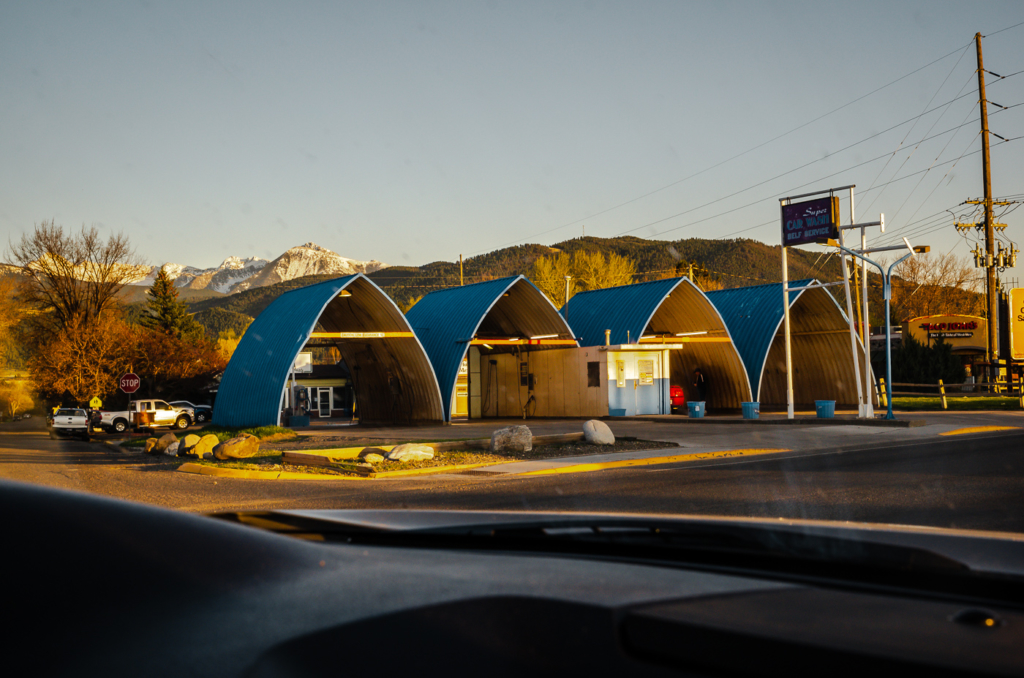
We had cappuccino and an excellent light Mexican dinner at Gil’s Goods. Next door, the Murray’s Café, was soon having live music. We would’ve loved to have stayed and partied, but we reluctantly decided to stick to our schedule and head out.
Bozeman
Bozeman is the largest city in Gallatin Valley. Prior to the Europeans, Shoshone, Bannock, Nez Perce and Blackfeet hunted buffalo and other game here. This city of just 50,000 folks is the fourth largest in the fourth largest US state. It has a prosperous and hip vibe to it. Friends in Boise, who have a daughter living there, told us to go to the Wild Crumb because it was the best breakfast place in the city. It’s an outstanding bakery with great eggs. They also recommended Wild Joe*s Coffee Spot and we can attest the joint brews a good cup of java.
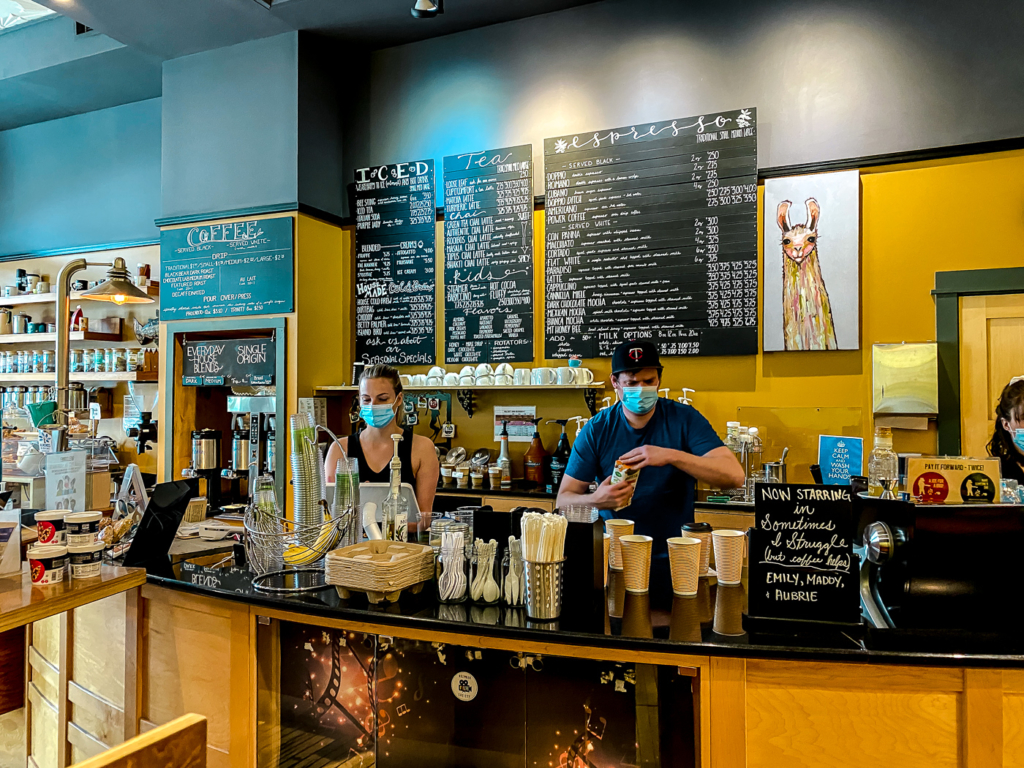
This place merits at least a half-day visit or several days if used as a base to explore nearby mountains. We just slept there, had breakfast and coffee and continued west on Interstate 90.
Butte
Livingston and Bozeman have restaurants and bars that could be in San Francisco or New York City, thriving retail businesses and many young residents. The next city we stopped in was Butte, which has a distinctly different ambience and energy.
Butte was a small outpost for miners. In the 1870s, silver and copper were discovered in the nearby hills which brought significant wealth to the area and a growing population. In 1879, a fire burned the city and afterwards only brick or stone buildings were allowed to be built in the downtown. The town’s prosperity went to a higher level in the early 1900s when the US was electrified, which dramatically increased the demand for copper. Then World War I pushed the demand for copper even higher as it was used in rifle bullets. As a result, Butte became perhaps the richest small city in the US.
Mining for copper continued for decades, although demand gradually dropped. Mining companies changed from tunnels to strip mining which is environmentally damaging and unsightly. In 1956, Swiss photographer Robert Frank photographed Butte and its residents as part of his famous book, The Americans. From his photos, you can see this place was rough around the edges and had declined from peak prosperity.
The largest strip mine closed in 1982, accelerating the economic and population decline. The mine and surrounding land became the nation’s largest Superfund site. Mining resumed at a modest level, but Butte is a far cry from its opulent and bustling days. Most of the historic buildings remain, but many are empty or partially used, sometimes for pawn shops and casinos.
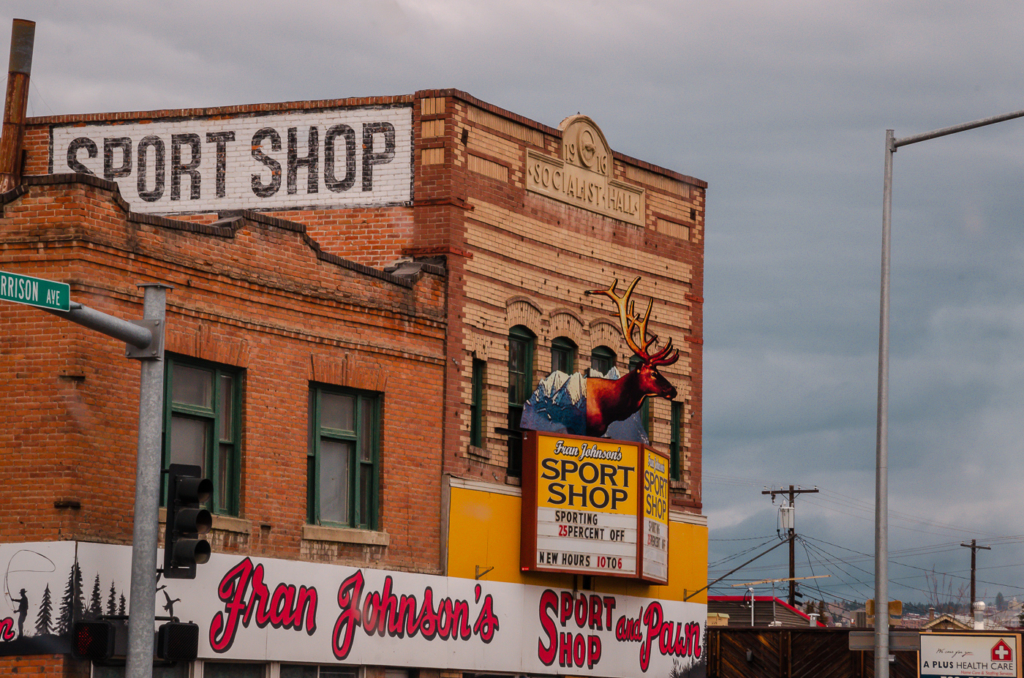
Of course, to a photographer like me, this was a rich tableaux I could spend days capturing. While that length of time wasn’t an option, we spent a couple more hours than we planned, checking out the boarded buildings and empty lots.
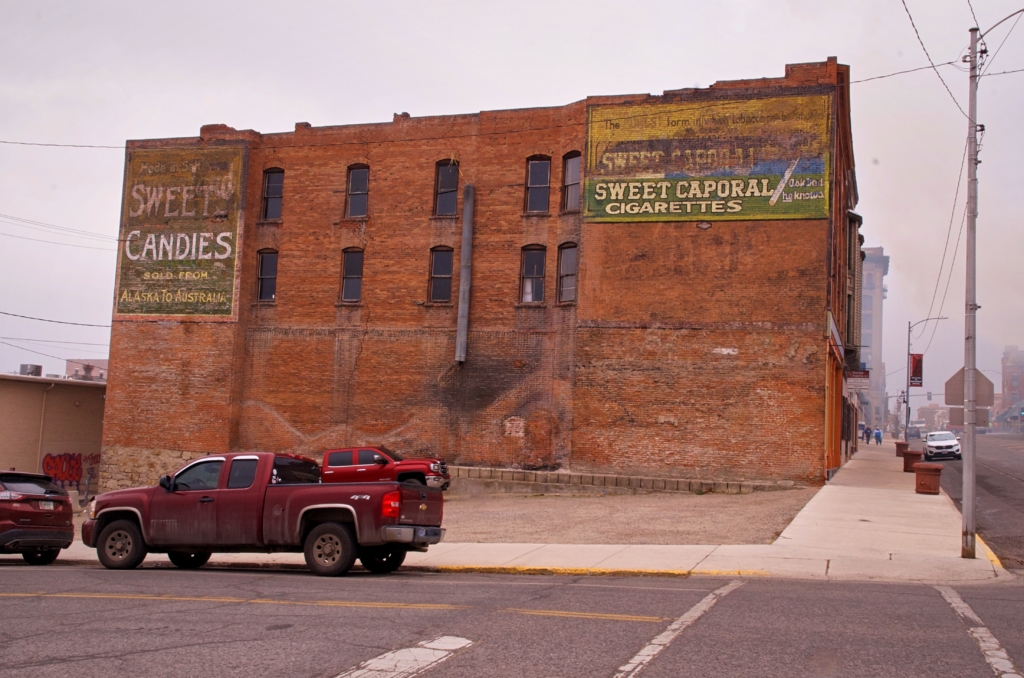
Many buildings, streets and businesses have names of a type of mineral, in honor of its mining history.

The mining area stands prominently outside of town, in front of mountain ranges.
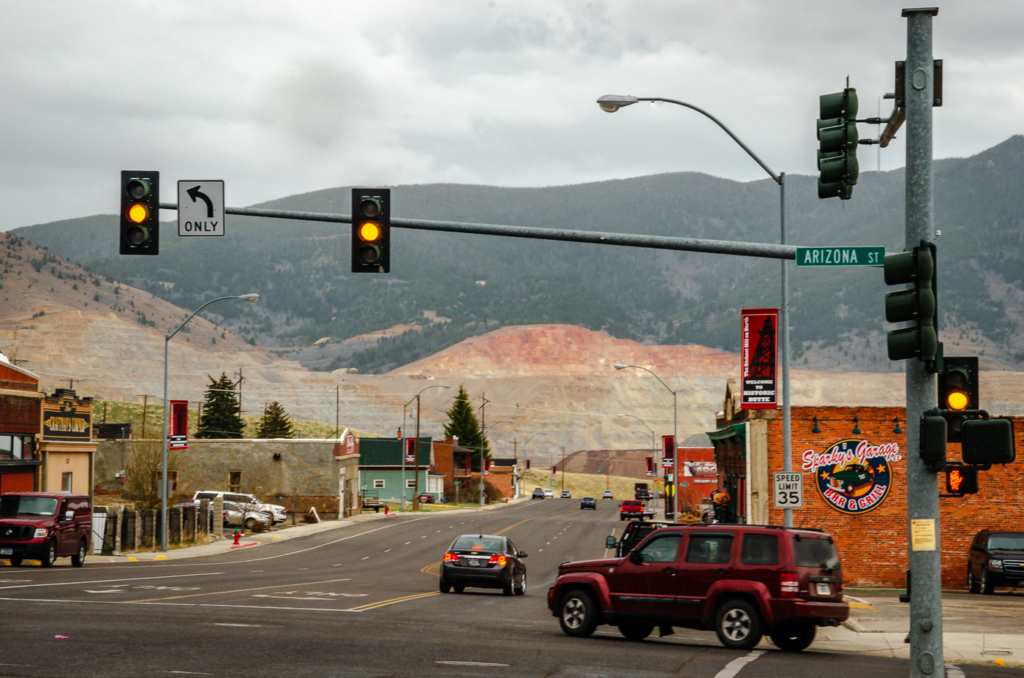
With this colorful history, access to natural recreation and solid, if deteriorating, building stock, affluence may return to Butte. This is a plausible scenario considering Montana is experiencing one of the largest per capita population increases.
Missoula
Continuing west on I90, our next stop was Missoula, the state’s second largest city. Many of the residents are students or employees of the University of Montana. These folks help support gourmet restaurants, a lively music scene and a variety of outfitter and outdoor-recreation stores.
We stopped for coffee and lunch at Market on Front, a one-stop restaurant, deli, grocery and coffee shop. Interestingly, when traveling in WY, MT, ID and UT, we found a low percentage of people wearing masks to combat Covid-19. In contrast, we were immediately given masks when we walked in, as we forgot ours and left them in the truck.
The one aspect of the city that stood out to me in this brief visit was the charming streets of single-family houses with tree-filled-yards by the U of MT campus
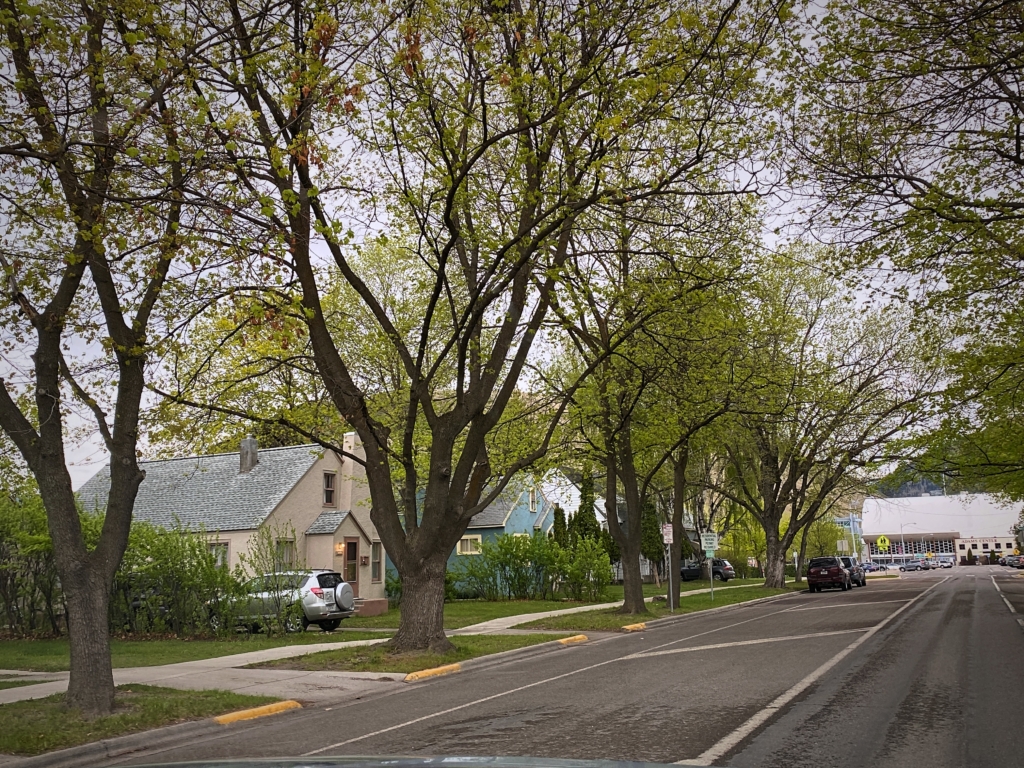
Flathead Lake & River and Kalispell
We left I90 and drove north on US 93, passed the 30 mi / 50 km long Flathead Lake. North of the lake is Flathead River, which has lovely scenes of farmland and small developments.

We soon arrived in Kalispell, which is a good place to stay to explore Glacier National Park. We didn’t spend any time there besides just sleeping. However, I liked this artistic bust of a moose in the lobby of the Holiday Inn & Express Suites where we stayed.
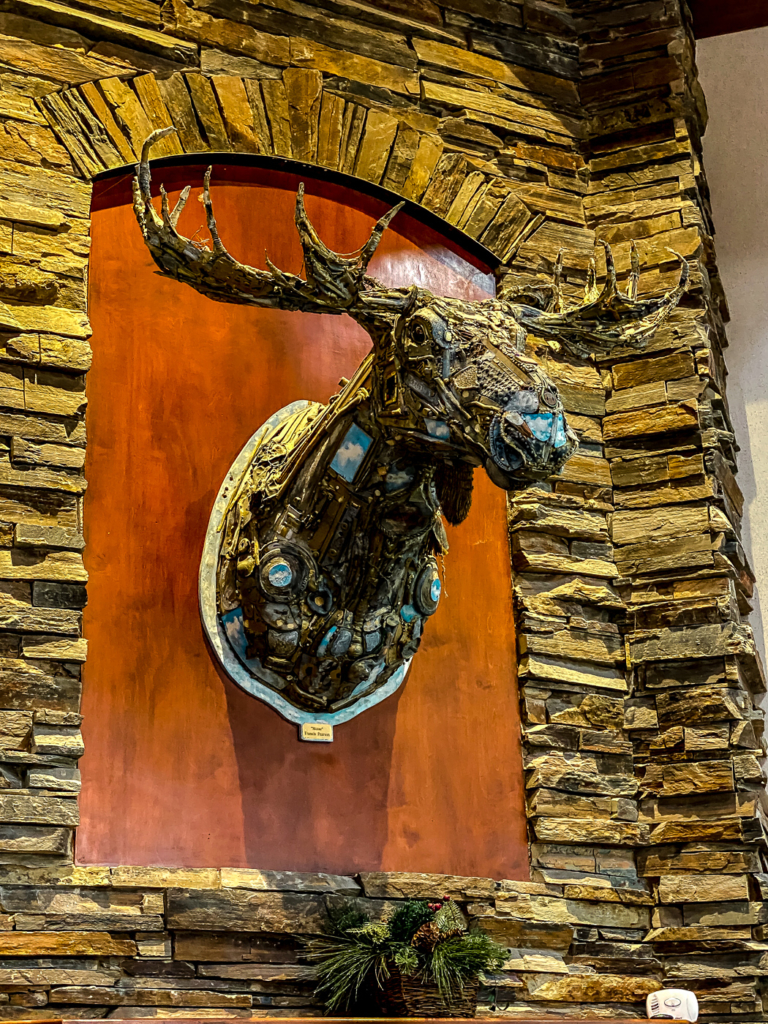
Glacier National Park
Glacier is a premier park in the US. It’s known as the “Crown of the Continent” because of its spectacular beauty and glaciers of permanent snow. It has numerous hiking trails of varying difficulties, abundant wildlife (including bighorn sheep, bears and moose) and many lakes and waterfalls. When we arrived on May 8, most of it wasn’t open (we should have planned better). For the most part, we were limited to US 20 between Kalispell and Browning. While we were unable to see the most well-known sites, we still enjoyed the scenery.
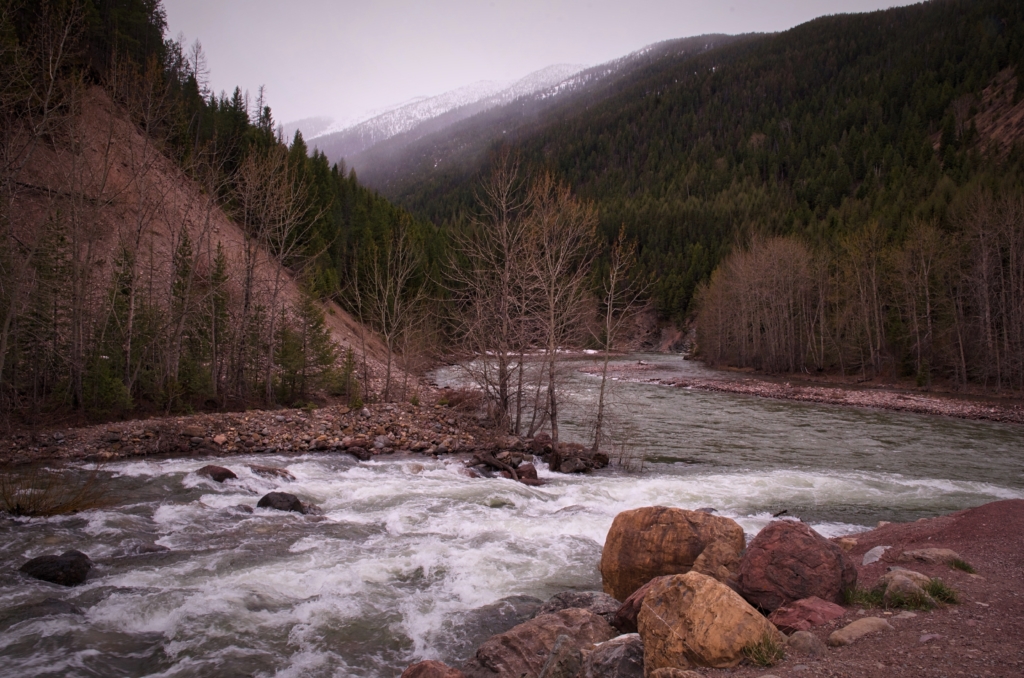
Adventurous souls were rafting in the ice cold water from the glaciers,
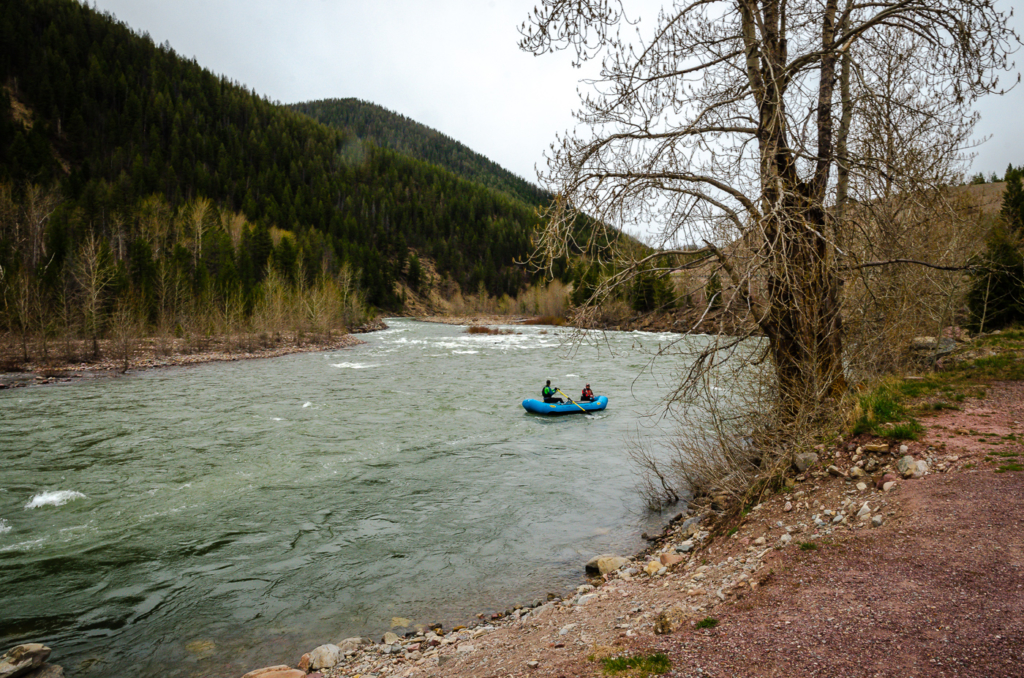
While there, I met Jacob who was visiting from Florida to monitor sonic waves which reveal seismic and solar activity.

In a half-hour, I had a scientific workshop about his area of expertise. Here are excerpts:
He let me listen to his device which is a NASA kit he assembled. I heard lightning many miles away. I was definitely fascinated by this unexpected encounter.
Browning and the Blackfeet Reservation
The Blackfeet Indian Reservation is the homeland of one of the 10 largest tribes in the United States with approximately 18,000 members. It’s on the eastern border of Glacier National Park. The Blackfeet’s traditional land also extends into Alberta, Canada. When we were there, the border with Canada was closed because of Covid-19. However, Blackfeet residents on either side were allowed to cross.
Economic conditions in this reservation, as well as others in the US, have not been great for a long time. However, the Covid-19 pandemic shut down their tourist related businesses, which put further strain on them. The main city is Browning where we saw many closed shops.

The city had just basic businesses operating such as grocery stores and gas stations. Most of the homes are small houses or trailers.
Near entrances to Glacier, there are statues of Blackfeet ancestry created by Blackfeet member Jay Laber (1961–2019) using scraps of discarded automobiles, wire and stone.
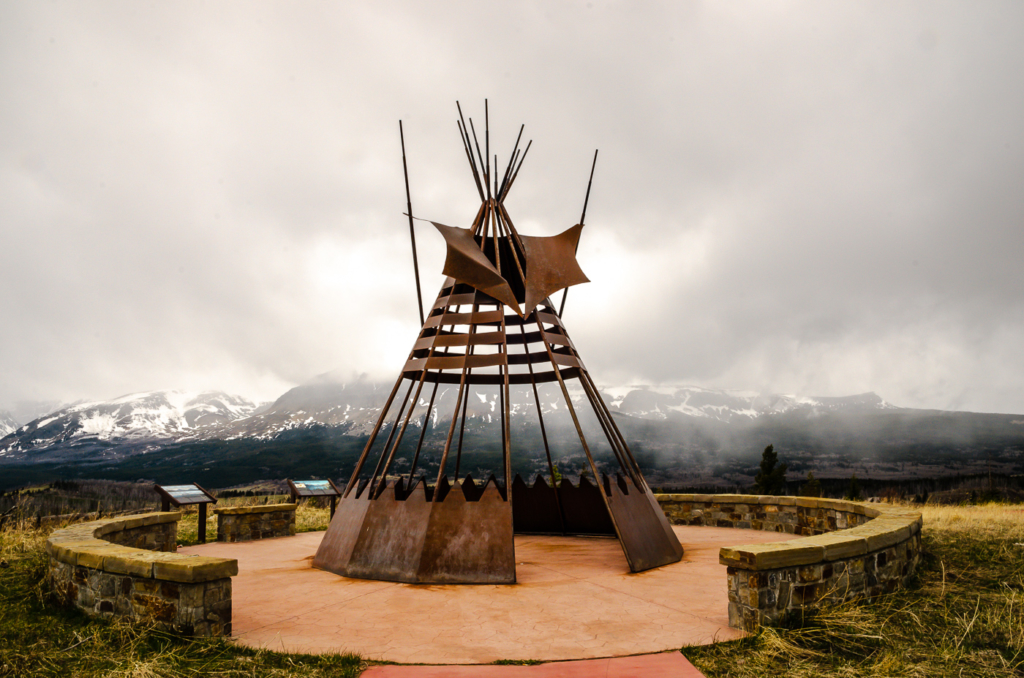
The Missoula Art Museum had an exhibition of his “reborn rez wrecks”.
Whitefish
Whitefish is one of those upscale towns where the ultra-rich stay and ski nearby slopes (think Aspen CO, Park City UT, Jackson, WY and Sun Valley ID). It’s just on the other side of Glacier from Browning, but is a world of difference in terms of affluence. The center of town has wide streets, diagonal parking and sequenced, well-maintained, Old-West style buildings, usually with expensive SUVs and trucks parked outside.
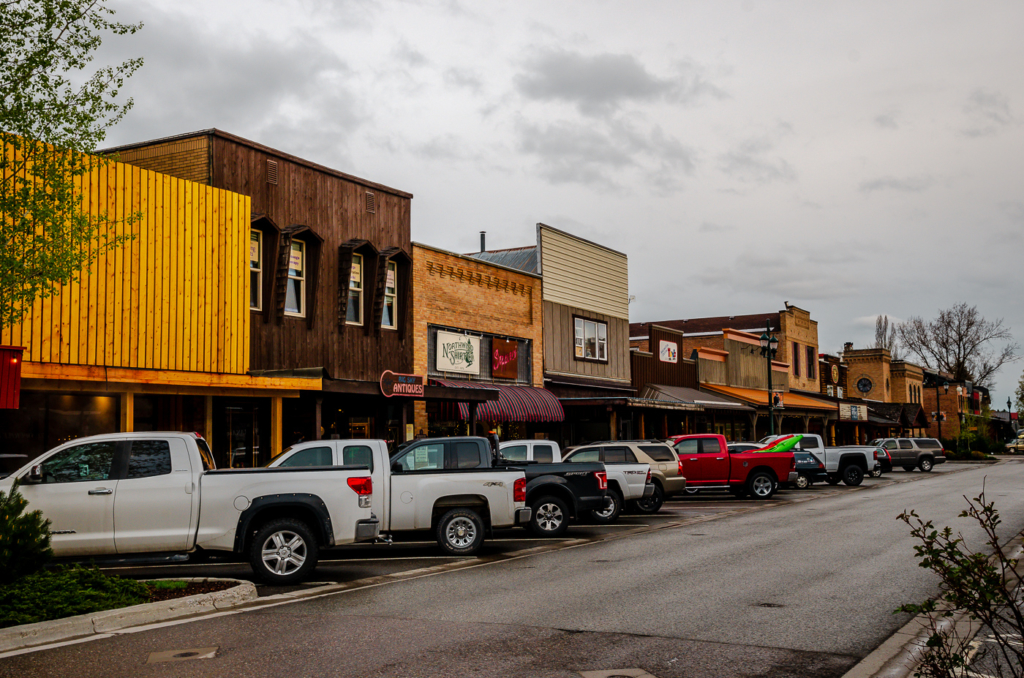
Of course, such a place has its share of trendy restaurants with good cuisine and service. We ate a very good dinner at Tupelo Grille. The selection was southern and a little Cajun. They even had two musicians who did an excellent, long version of Creedence Clearwater Revival’s Suzy Q (in their style and not that of Dale Hawkins who wrote and originally performed the song).
We also had cappuccino at Boudoir Bar Café on the first day it opened. We recommend the coffee and ice cream, but what I really liked was the map of the world on the wall.
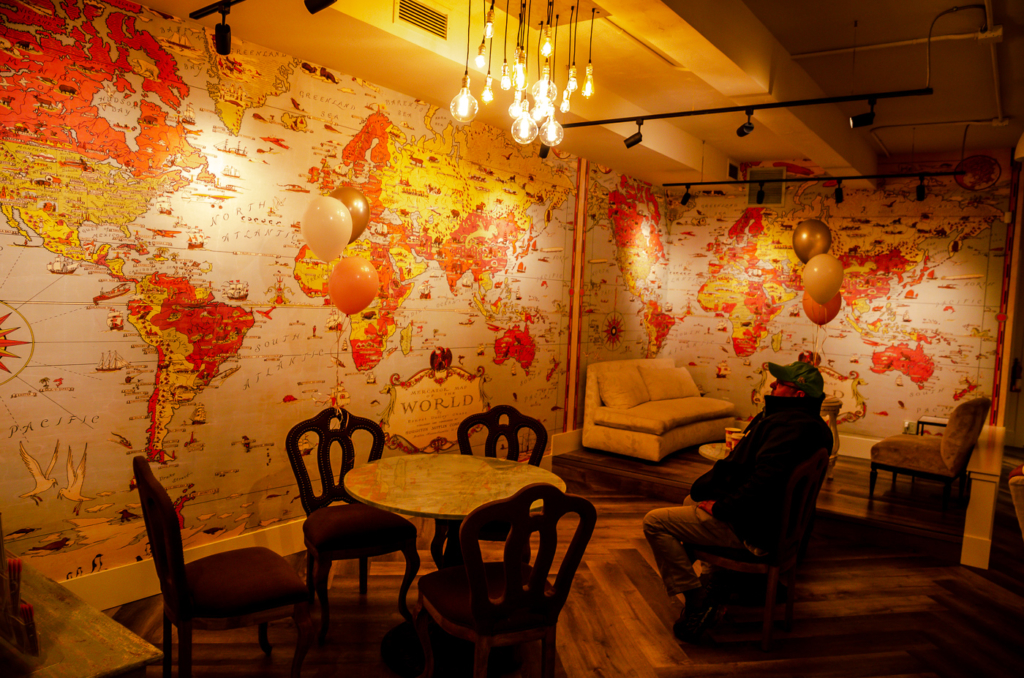
The map was from the early 1900s and I loved looking at the countries and their names in this precolonial world.
Kootenai Falls
Driving west on US 2 for a couple hours, we reached Kootenai (pronounced KOO-tun-ee or KOO-tun-ay) Falls, not too far from the Idaho panhandle.
The Kootenai River flows over Kootenai Falls, one of the largest free flowing (no dam) waterfalls in the Northwest US.
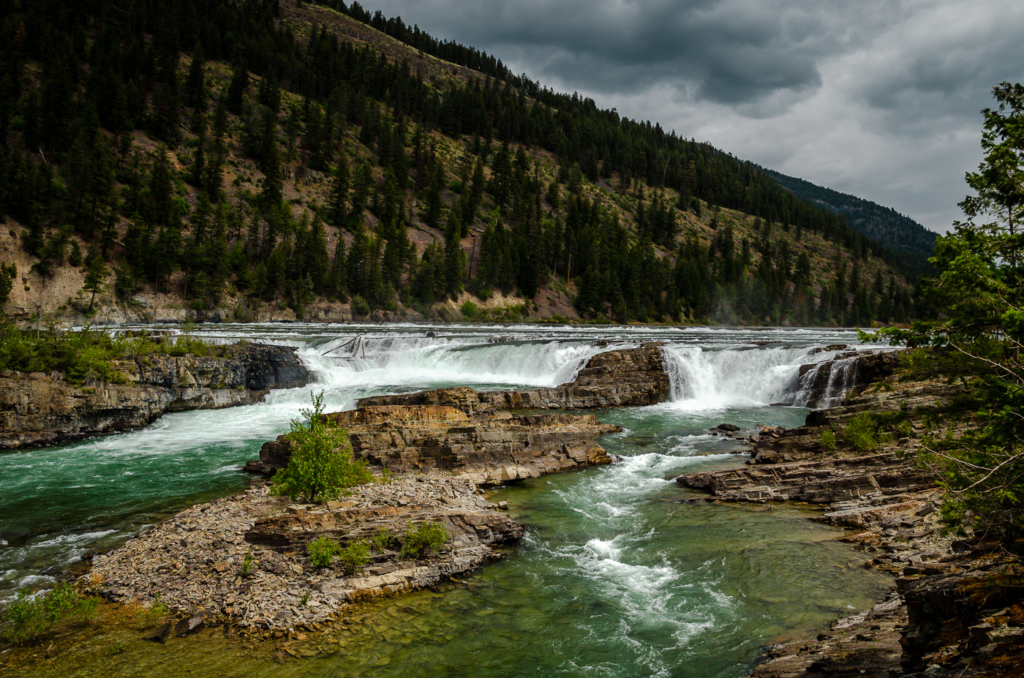
The falls and area are sacred to the Kootenai Indians. A trail from the highway parking lot leads down to the Kootenai Falls and the properly named Swinging Bridge.
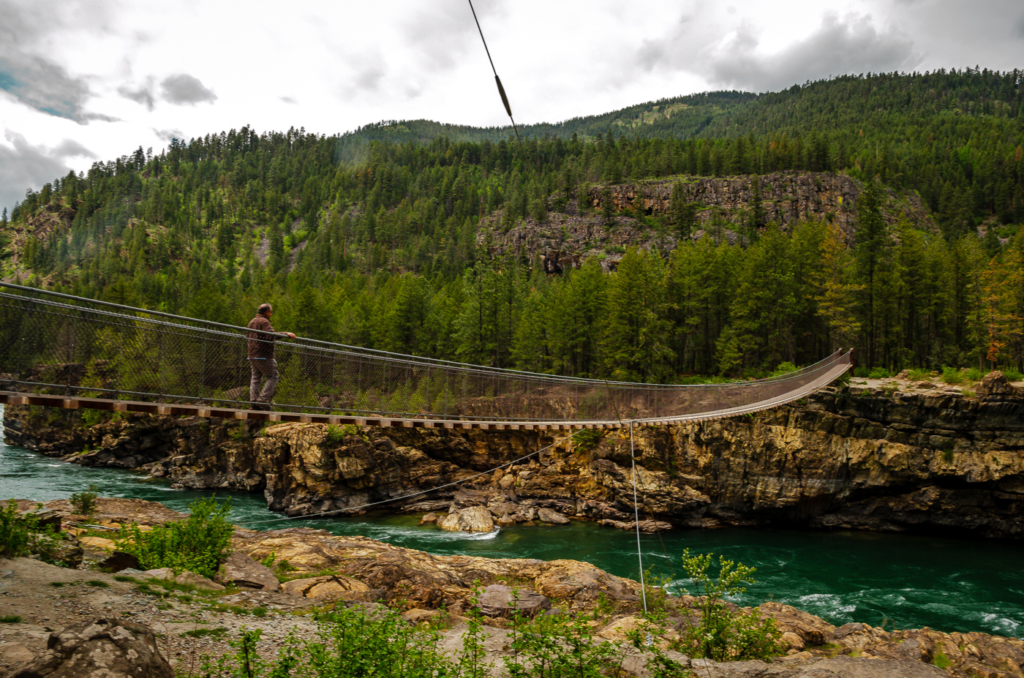
Plan to spend at least an hour here or more if you want to photograph…
or relax in a scenic area.
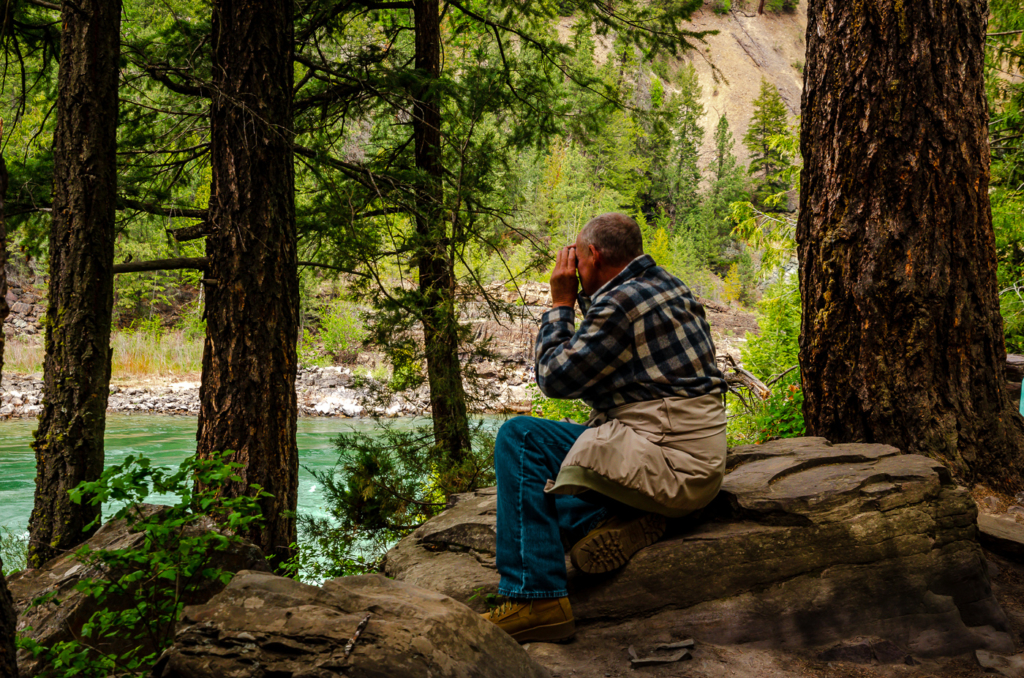
“The Revenant”, which has the best landscape cinematography in my opinion, was filmed here for the thrilling scene of Leonardo DiCaprio floating down a rushing river to escape pursuing Native Americans.This location was also used in the 1994 movie, “The River Wild”.
By the parking lot, I bought a wood carving from the artist, Robert Russell.

Mike remarked that the figure looked like him. He said it does now, but not 20 years ago when he started making this image.
Final Thoughts on the Montana Rocky Mountains
We raced through Western Montana, as we had long distances to cover in a short amount of time. We truly got a feel for the rugged landscape and enjoyed the experience. My next trip there, I will confine myself to a smaller area and concentrate on outdoor activities.
Next stop: Idaho!

